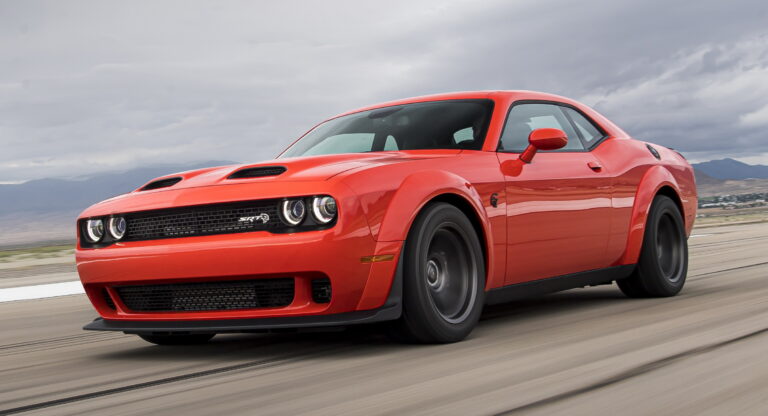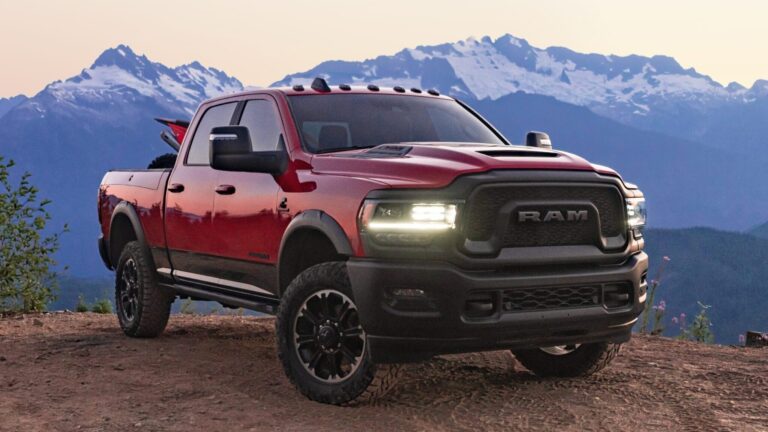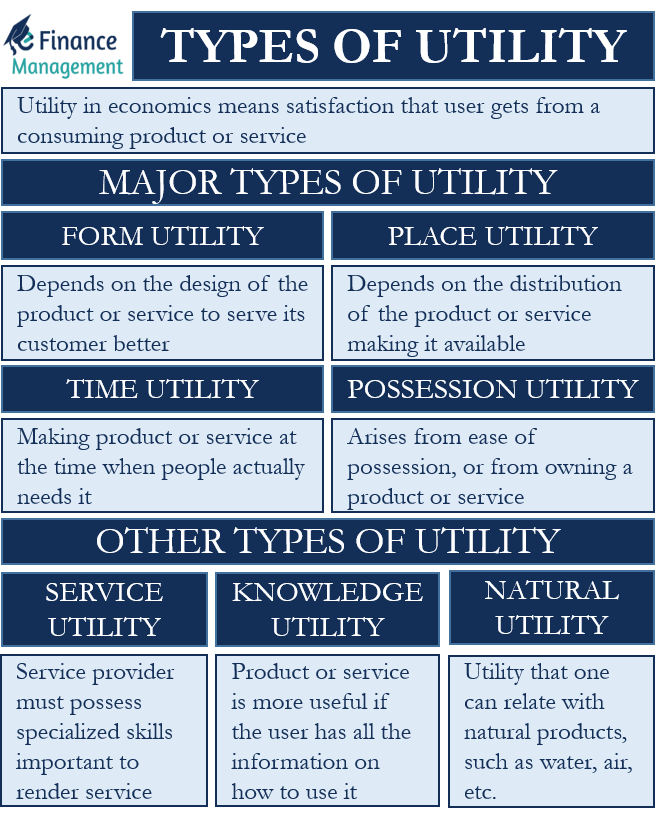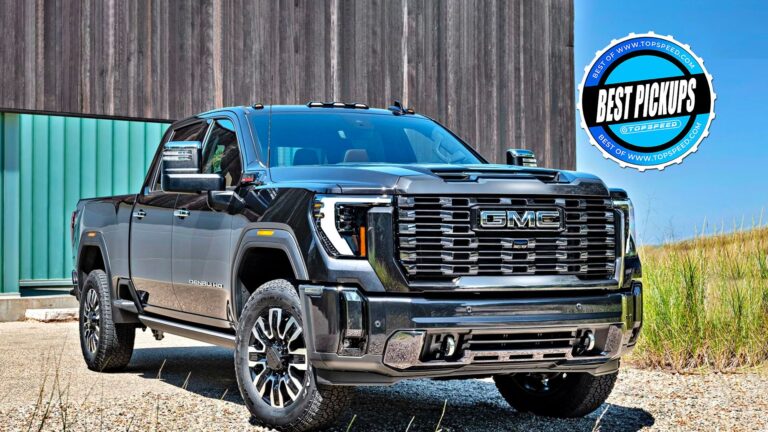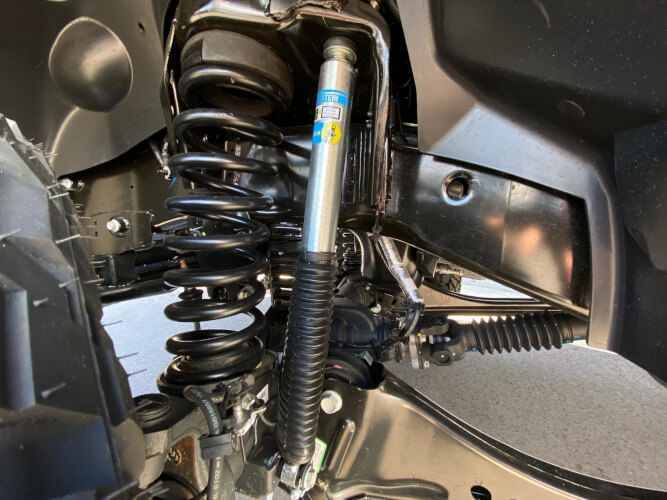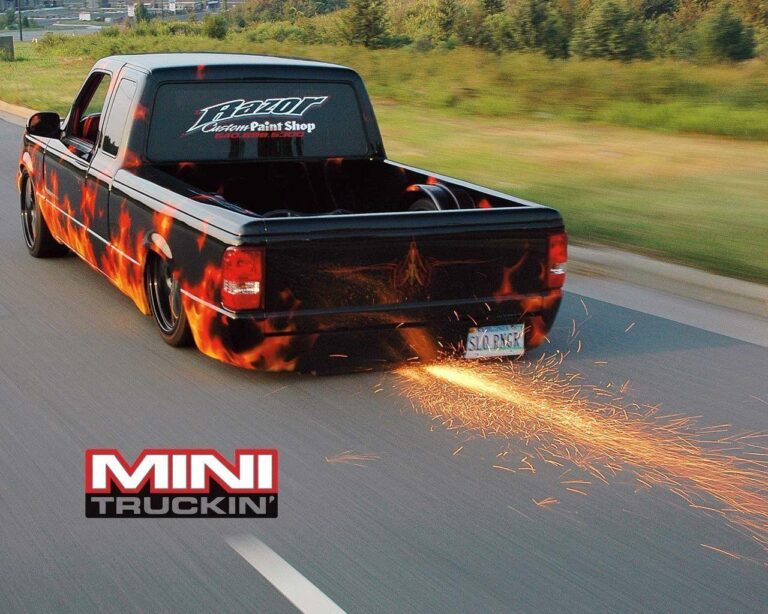Trucks For Sale Under $500: A Comprehensive Guide to the Extreme Budget Buy
Trucks For Sale Under $500: A Comprehensive Guide to the Extreme Budget Buy cars.truckstrend.com
Introduction: The Elusive Bargain – What Does "$500 Truck" Truly Mean?
The allure of a truck for sale under $500 is undeniable. In a world where vehicle prices, even for used models, seem to constantly climb, the idea of acquiring a robust workhorse for less than the cost of a new smartphone can spark visions of savvy deals and immediate utility. However, let’s confront the harsh reality upfront: finding a functional, roadworthy truck for under $500 in today’s market is exceptionally rare, bordering on mythical.
Trucks For Sale Under $500: A Comprehensive Guide to the Extreme Budget Buy
This article isn’t about finding a daily driver or a reliable hauler for pocket change. Instead, it’s a realistic exploration of what "trucks for sale under $500" genuinely entails. It delves into the types of vehicles you might encounter at this rock-bottom price point, the hidden costs, the inherent challenges, and the specific purposes for which such a purchase might (just might) make sense. If you’re looking for a serious project, a parts donor, or simply a learning experience in automotive mechanics and salvage, then understanding the landscape of sub-$500 trucks is crucial. This guide aims to equip you with the knowledge to navigate this niche market, setting realistic expectations and helping you avoid common pitfalls.
The Harsh Reality: What to Expect from a Sub-$500 Truck
When you encounter a truck advertised for under $500, immediately lower your expectations to ground level. These are not vehicles that will reliably get you from point A to point B without significant, immediate, and often costly intervention.
Common Characteristics of a Sub-$500 Truck:
- Non-Running or Barely Running: The vast majority will be non-operational, requiring towing. If they do run, it’s usually poorly, with major engine or transmission issues.
- Extensive Mechanical Problems: Expect blown head gaskets, seized engines, rusted brake lines, failing transmissions, electrical gremlins, worn-out suspension, and more. A $500 truck often comes with a laundry list of expensive repairs.
- Significant Body Damage and Rust: Years of neglect, accidents, or exposure to harsh elements will have taken their toll. Expect severe rust on the frame, body panels, cab corners, and floorboards. Dents, missing panels, and broken glass are common.
- Missing Parts: Components might have been scavenged, or simply fallen off. From interior pieces to engine accessories, don’t assume everything is intact.
- No Title or Salvage Many vehicles at this price point will lack a clean title, making legal registration difficult or impossible. They might come with a bill of sale only, or a salvage title indicating a total loss.
- Safety Hazards: Due to the severe neglect and mechanical issues, these vehicles are inherently unsafe to drive without extensive restoration. Lights, brakes, steering, and tires will likely be compromised.
- Limited Purpose: Such a truck is typically destined for use as a parts donor, a learning project, a scrap metal source, or an off-road utility vehicle on private property. It is highly unlikely to be road-legal or reliable for public road use without thousands of dollars in repairs.

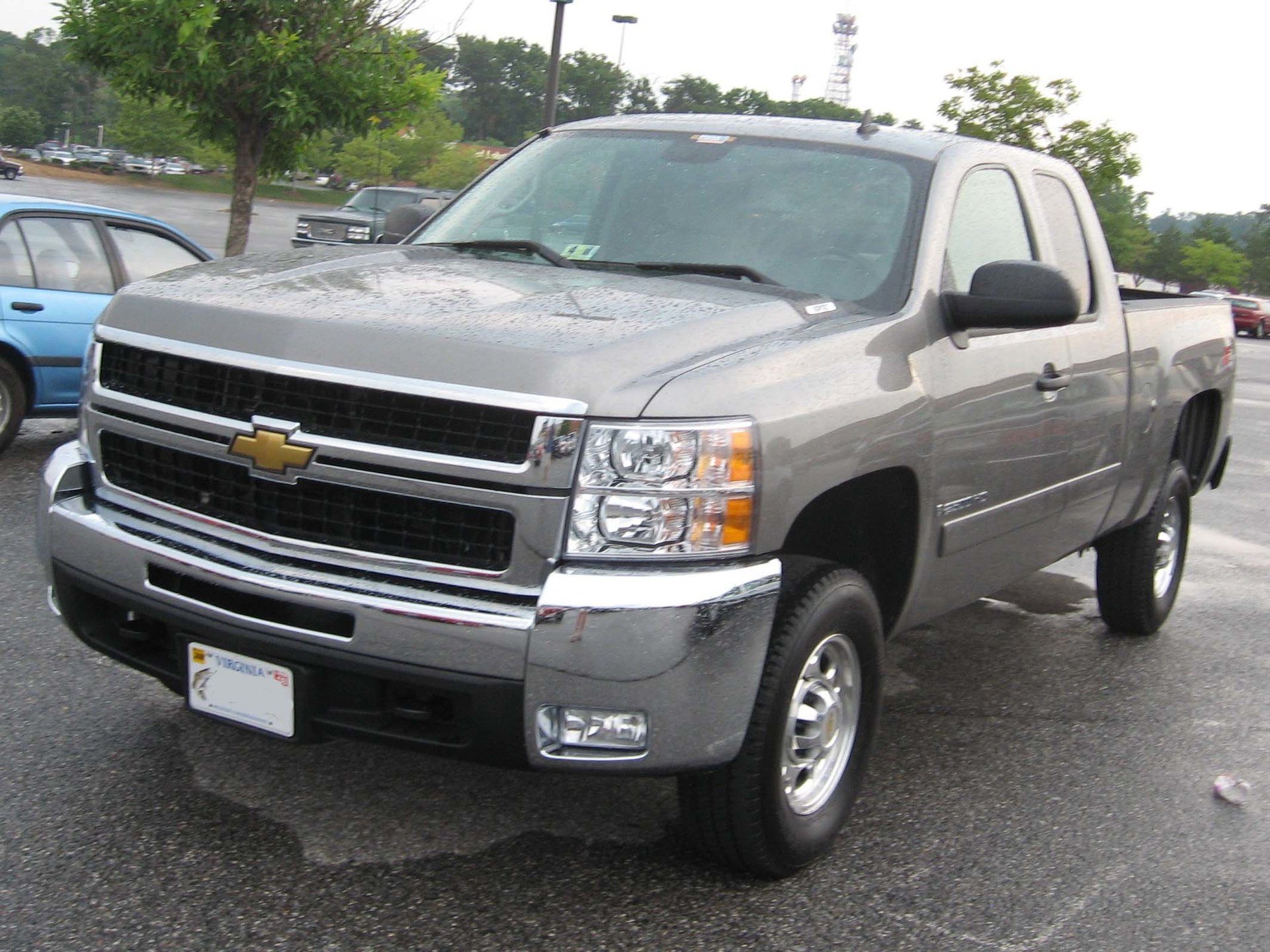
Where to Look (and What to Avoid) for Sub-$500 Trucks
Finding these extreme budget vehicles requires a specific approach and a healthy dose of caution.
Where to Look:
- Online Classifieds (Craigslist, Facebook Marketplace): These are your primary hunting grounds.

- Craigslist: Search in the "for sale by owner" section, filter by "cars & trucks," and set the maximum price to $500. Also, check the "parts" or "free" sections. Look for keywords like "parts truck," "project," "non-running," "mechanic special," or "needs hauled."
- Facebook Marketplace: Similar to Craigslist, use the price filter and keywords. Join local "parts for sale" or "farm & ranch equipment" groups, as people often offload old vehicles there.
- Local Salvage Yards/Junkyards: While they primarily sell parts, some yards might sell entire vehicles that are too complete to scrap immediately, often for a flat fee or by weight. These are almost exclusively parts donors or scrap.
- Word-of-Mouth & Rural Areas: Ask around. Farmers, landowners, and mechanics often have old, non-running vehicles sitting in fields or yards that they’d be happy to see gone for a few hundred dollars or even free. Drive through rural areas and look for "For Sale" signs (though these are increasingly rare).
- Auction Houses (Specialized/Impound): Impound lots or specialized salvage auctions might have vehicles that go for very low prices, but these usually come with no guarantees, no opportunity for inspection, and often lack titles. This is a very high-risk strategy.
What to Avoid:
- Scams: Be wary of listings that seem too good to be true, ask for payment before viewing, or involve complicated shipping arrangements. Always inspect the vehicle in person.
- Unrealistic Promises: If a seller claims a $500 truck "just needs a battery" or "runs perfectly, just needs a little TLC," be extremely skeptical. If it were that easy, they’d fix it and sell it for much more.
- No Unless you explicitly intend for the truck to be a parts donor or for off-road/private property use only, avoid vehicles without a clear, transferable title. Dealing with title issues can be a legal nightmare.
- Overly Aggressive Sellers: If a seller pressures you into a quick sale without proper inspection, walk away.
Types of "Trucks" You Might Find Under $500
Given the severe price constraint, the "trucks" you encounter will likely fall into specific categories, often from older model years.
- Older Compact Pickups (e.g., Ford Ranger, Chevy S-10, Nissan Hardbody, Toyota Pickup): These tend to be more numerous due to their original lower cost and simpler mechanics. However, at this price point, they will be very old (often 1980s or early 1990s), severely rusted, and non-running.
- Vintage Full-Size Pickups (e.g., Ford F-Series, Chevy C/K Series, Dodge D-Series): You might find very old (1970s, early 1980s) full-size trucks. These are often heavy-duty models that have been worked to death. Expect massive rust, missing engines/transmissions, or engines that haven’t run in decades. They might be sold for their scrap value or as a challenging restoration project.
- Utility/Farm Vehicles: Occasionally, you might find an old utility vehicle or a farm truck that isn’t road-legal but could serve a purpose on private land (e.g., hauling feed, moving brush). These are rarely in good shape.
- "Bare Bones" or Parts Donors: This is the most common category. You might find just a rolling chassis, a cab, or a vehicle that’s clearly been stripped for parts, with only the shell remaining. These are explicitly for parts or scrap.
The True Cost: Beyond the Purchase Price
The $500 purchase price is almost always just the tip of a very large iceberg. Anyone considering a truck at this price point must factor in significant additional expenses.
- Towing: If the truck doesn’t run, you’ll need to pay for a tow truck to get it home. This can easily be $100-$300 or more, depending on distance.
- Tools and Equipment: Unless you’re already a seasoned mechanic with a fully stocked garage, you’ll need basic tools, safety equipment, and potentially specialized tools for specific repairs.
- Parts: This is where the budget explodes. Even for an older truck, replacement parts can quickly add up. A new engine could be thousands, a transmission hundreds to thousands, major bodywork hundreds to thousands. Even small components like brake lines, fuel pumps, or ignition parts can exceed your initial purchase price.
- Fluids: Oil, coolant, brake fluid, transmission fluid – all these need to be replaced, especially in a vehicle that’s been sitting.
- Tires: Old, dry-rotted, or flat tires are common. A new set can easily cost $500-$1000.
- Legal & Administrative Costs: If you manage to get it running and roadworthy, you’ll face title transfer fees, registration, safety inspections, and insurance. If the title is missing or salvage, these costs and hurdles increase exponentially.
- Time and Labor: Unless you’re paying a mechanic (which would make a $500 truck financially unviable), you’ll be investing countless hours of your own time.
Realistically, a "$500 truck" often turns into a "$2,000 to $5,000+ project" before it’s even minimally roadworthy, if it ever gets there.
Is It Worth It? Determining Your Goal
Before even looking at a sub-$500 truck, define your purpose clearly. This price point dictates very specific, limited goals.
- Parts Donor: This is arguably the most common and sensible use. If you already own a similar model, buying a $500 truck for its engine, transmission, axle, or body panels can be a cost-effective way to acquire spares.
- Learning Project: For aspiring mechanics, a $500 truck is an ideal, low-stakes platform to learn about engines, transmissions, wiring, and bodywork. It’s okay if you break something – the initial investment was minimal.
- Scrap Metal: If the vehicle is truly beyond repair, its weight in scrap metal might recoup some or all of your investment, especially if you can haul it yourself.
- Farm/Off-Road Utility: If you have private property and need a vehicle for hauling feed, moving logs, or light utility work that doesn’t require road legality, a very cheap truck might suffice. However, even for this, it needs to be minimally functional and safe.
- Extreme Restoration Project (for the highly skilled and patient): For someone with extensive automotive experience, a full workshop, and a deep passion for a specific vintage model, a $500 truck could be the starting point for a multi-year, multi-thousand-dollar restoration. This is not for the faint of heart or the inexperienced.
It is NOT worth it if your goal is:
- A reliable daily driver.
- A cheap way to get around.
- A quick flip for profit (unless you’re an expert mechanic who can do all work yourself for free).
Inspection Checklist (for what it’s worth)
While a comprehensive pre-purchase inspection is impossible for a $500 truck, here’s a minimal checklist to gauge its potential:
- Title Status: Ask for the title upfront. Is it clean, salvage, or non-existent? Does the VIN on the title match the VIN on the truck? This is critical for any future registration.
- Frame Rust: Get underneath with a flashlight. Look for severe rust, cracks, or rot, especially near suspension mounts, body mounts, and crossmembers. Frame damage can be fatal.
- Engine Presence & Condition: Is the engine still there? Is it seized (try turning the crank by hand if possible)? Any visible holes, major fluid leaks, or signs of catastrophic failure?
- Transmission: Is it present? Any obvious damage?
- Body Rust: Check cab corners, rocker panels, floorboards, bed, and wheel wells. Minor surface rust is fine; holes and structural rust are not.
- Tires: Are they holding air? Are they dry-rotted?
- Fluids: Check oil and coolant levels and appearance (muddy oil, milky coolant indicate major issues).
- Electrical Wiring: Look for obvious signs of chewed wires, burned insulation, or amateur "fixes."
- Completeness: What’s missing? The more parts missing, the more you’ll spend.
Always assume the worst and add a significant contingency budget.
Legalities and Paperwork for Sub-$500 Trucks
Navigating the legalities of a super-cheap truck can be complex.
- Clean The ideal, but rare, scenario. Ensures easy transfer of ownership and registration (once the truck is roadworthy).
- Salvage Indicates the vehicle was declared a total loss by an insurance company. It can be registered, but often requires a special inspection process to prove roadworthiness, which can be rigorous and expensive.
- Bill of Sale Only: Common for non-running vehicles sold for parts. This typically means you cannot legally register the vehicle for road use. It’s for private property or parts only. Ensure the bill of sale clearly states the vehicle is sold "as-is, for parts only" and includes VIN, buyer/seller info, date, and price.
- No This is the riskiest. Avoid unless you are absolutely certain you only need the truck for parts or scrap, and your local regulations allow this. Reacquiring a title can be a long, expensive, and often futile process involving bond titles or lien sales.
- State-Specific Laws: Vehicle title and registration laws vary significantly by state. Research your local Department of Motor Vehicles (DMV) requirements before purchasing.
Illustrative Examples: What a "$500 Truck" Might Be
It’s impossible to provide exact prices for specific models, as condition is paramount. Instead, here’s a hypothetical table illustrating the types of "trucks" you might encounter under $500 and their realistic conditions.
| Category of "Truck" | Typical Condition for <$500 | Common Issues Expected | Primary Purpose | Realistic Repair Investment (Beyond $500) |
|---|---|---|---|---|
| Non-Running Project | Engine seized/blown, transmission failed, heavy rust, flat tires, electrical issues. | All major mechanicals, bodywork, brakes, fuel system, electrical. | Parts donor, learning project, scrap. | $2,000 – $10,000+ (if attempting to make roadworthy) |
| Parts Donor | Stripped of many key components, major frame/body damage, no title. | Missing engine/transmission/axles, severe rust, non-existent interior. | Harvesting specific parts for another vehicle. | Minimal, as no attempt to run/drive. |
| Scrap Value | Completely derelict, extreme rust, missing major components, beyond repair. | Everything. Primarily metal value. | Selling for scrap weight. | Cost of hauling/towing to scrap yard. |
| "Farm Use Only" | Runs but poorly, no brakes, bald tires, no lights, severe rust, likely no title. | Engine/trans health, steering, suspension, brakes, tires, electrical. | Private property utility vehicle. | $500 – $2,000+ (for basic functionality) |
| Bare Chassis/Cab | Just the frame, or a cab with some frame attached. No engine, transmission, or bed. | Requires a complete drivetrain, suspension, wiring, bodywork. | Custom build, specific part source. | $5,000 – $20,000+ (to build a complete vehicle) |
Note: The "Realistic Repair Investment" columns represent additional money you would need to spend after the initial sub-$500 purchase, assuming you do all labor yourself. If you hire a mechanic, these costs would be significantly higher.
Practical Advice and Actionable Insights
- Define Your Goal: Before you even start looking, honestly assess what you want to achieve with a sub-$500 truck. Is it for parts, a learning experience, or scrap? Do NOT deceive yourself into thinking it will be a cheap daily driver.
- Budget Realistically (and then some): Understand that the purchase price is a fraction of the total cost. Set aside a substantial budget for towing, tools, and especially parts. A general rule of thumb: for every dollar you spend on the truck, expect to spend $5-$10 (or more) to get it minimally functional, let alone roadworthy.
- Inspect Thoroughly (within reason): Even for a $500 vehicle, a quick look can save you major headaches. Prioritize title status and frame integrity.
- Assume the Worst: Go into every potential purchase assuming the engine is blown, the transmission is shot, and the frame is rusted. If it’s slightly better, consider it a bonus.
- Negotiate: For vehicles at this price point, sellers are often just looking to get rid of them. Don’t be afraid to offer less, especially if you identify issues.
- Safety First: If you plan to work on the truck, invest in jack stands, safety glasses, gloves, and proper tools. Never work under a vehicle supported only by a jack.
- Consult Local Laws: Understand your state’s regulations regarding vehicle titles, registration of non-running vehicles, and scrap vehicle disposal.
- Be Patient: Finding the "right" $500 truck (meaning one that aligns with your specific, limited goal and isn’t a complete money pit) requires patience and persistence.
Frequently Asked Questions (FAQ)
Q1: Can I really find a reliable truck for under $500?
A1: No. It is virtually impossible to find a reliable, roadworthy truck for under $500. Any truck at this price point will be non-running, severely damaged, or require extensive, costly repairs to become remotely functional.
Q2: What’s the most common use for a truck purchased for under $500?
A2: The most common uses are as a parts donor for another vehicle, a learning project for aspiring mechanics, or a source of scrap metal.
Q3: What are the biggest hidden costs of buying a sub-$500 truck?
A3: The biggest hidden costs include towing, replacement parts (often thousands of dollars), tools, and potential legal/title fees if you attempt to make it roadworthy.
Q4: Do these trucks usually come with a title?
A4: Many do not. You might find them with a "bill of sale only," a salvage title, or no title at all. This significantly impacts your ability to legally register the vehicle.
Q5: Is it possible to make a $500 truck roadworthy?
A5: Yes, but it will almost certainly cost thousands of dollars and hundreds of hours of labor, far exceeding the initial $500 purchase price. It’s a major undertaking requiring significant mechanical skill and resources.
Q6: Where is the best place to look for these types of trucks?
A6: Online classifieds like Craigslist and Facebook Marketplace (using price filters and keywords like "parts," "non-running," "project") are your best bet. Local salvage yards or word-of-mouth in rural areas can also yield results.
Q7: Should I buy a $500 truck if I’m not mechanically inclined?
A7: Only if your goal is to learn and you’re prepared for significant frustration and expense, or if you plan to scrap it. If you need a functional vehicle and aren’t a mechanic, a sub-$500 truck is not for you.
Q8: What specific issues should I look out for?
A8: Critical issues include severe frame rust, a seized or blown engine, major transmission failure, and missing or non-existent titles. These issues often make a vehicle economically unviable to repair.
Conclusion: The Ultimate Project, Not the Ultimate Bargain
The concept of "Trucks For Sale Under $500" is less about finding a steal and more about embracing a significant challenge. These are not vehicles that will solve your transportation problems cheaply; rather, they are opportunities for the mechanically inclined, the patient project-seeker, or those in need of specific parts.
By setting realistic expectations, understanding the true costs involved, and clearly defining your purpose for such a purchase, you can navigate this extreme budget segment with eyes wide open. Whether it becomes a successful parts donor, a valuable learning experience, or simply a collection of scrap metal, a sub-$500 truck is rarely a simple transaction. It’s an investment in time, effort, and often, more money than the initial sticker price suggests. Approach with caution, a clear goal, and a healthy dose of mechanical aptitude, and you might just find exactly what you’re looking for – not a bargain, but a project.

